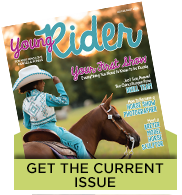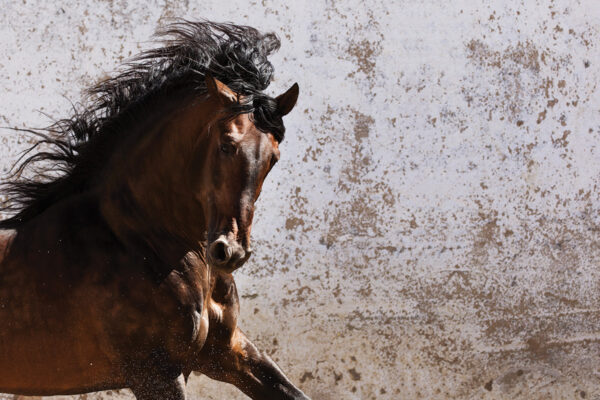
Europe’s Iberian Peninsula is made up of modern-day Spain and Portugal, spanning 225,000 square miles. It is home to over 50 million people. This peninsula is bordered by the Mediterranean Sea to the east, the Atlantic Ocean to the west, France to the north, and almost touches Morocco to the south. Why the geography lesson, you ask? Because if you love Spanish horse breeds, the Iberian Peninsula is more significant than you might think. This region has the distinction of being the original home of two breathtakingly beautiful ancient horse breeds: the Andalusian and the Lusitano.

A Peek into History
These two breeds have long and impressive histories dating back thousands of years. Ancient cave paintings in the region depict horses, and there is fascinating archeological evidence as well. Early Andalusians and Lusitanos were ridden by knights and used as war horses, and even William the Conqueror was a fan of these strong, sensible, talented horses.
In the subsequent centuries, horse breeders have so highly valued the qualities and characteristics of Andalusians and Lusitanos that the breeds have been used to develop numerous other popular and beloved breeds, including the American Quarter Horse, the Thoroughbred, the Friesian, and the Lipizzaner, as well as warmbloods, like Hanoverians and Oldenburgs, among many others.
In the olden days, Andalusians and Lusitanos had busy careers as war mounts and bullfighting horses, but today these breeds are superstars in other disciplines, like dressage (naturally!), working equitation, driving, trail riding, and more.
Breed Characteristics of the Andalusian and Lusitano
Each breed is named for a region within the Iberian Peninsula: Andalusia is in southern Spain, and Lusitania was an ancient name for what is now Portugal.
Despite their similarities in looks and in geographic origin, they are separate breeds with unique characteristics. They’re approximately the same height (15.2 to 16.2 hands), with short backs and flowing manes and tails, but the Lusitano is noted for having more muscular hindquarters than the Andalusian, while Andalusians sometimes have more action at the trot.
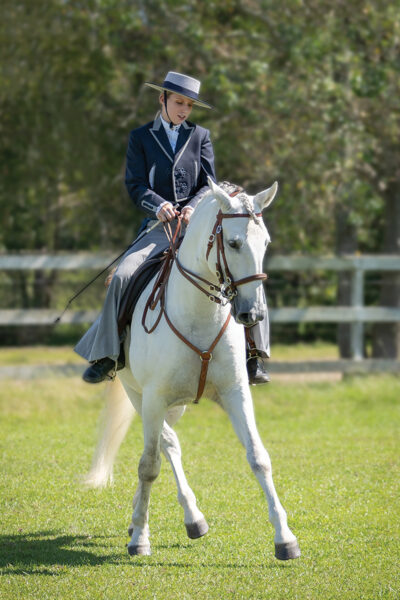
When it comes to the head, both breeds are known for their convex profiles (concave, or dished, heads like you’d see on an Arabian are considered undesirable in Lusitanos and Andalusians). Both breeds have natural, eye-catching beauty.
What about color? Gray is the predominant color in both breeds, and bay is commonly seen as well. Other colors are allowed, including black, brown, and chestnut, as well as dilutes like palomino and cremello.
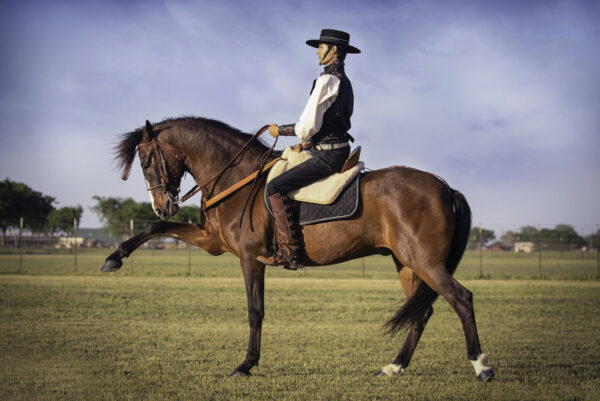
In terms of disposition, Andalusians are generally said to be a little quieter than Lusitanos, but of course that depends on the individual animal.
Andalusians and Lusitanos: Made to be Movie Stars
It’s no secret that Lusitanos and Andalusians are gorgeous, but when you pair those dazzling good looks with brilliant minds and trainability, it’s no surprise that these breeds are in high demand for appearances in film and television. Keep your eyes peeled during your next movie night and watch for them in films and shows like The Lord of the Rings and Game of Thrones.
But Andalusians and Lusitanos are more than just movie stars—they’ve excelled at the highest levels of equestrian sports. More than a dozen Lusitanos competed at the 2020 Olympic Games in Tokyo, and in 2012, an Andalusian named Fuego competed for Spain at the Games.
A Breed by Any Other Name
You might hear people refer to P.R.E. or P.S.L. horses when referring to these breeds, and those are short for Pura Raza Española (which translates to “Pure Spanish Horse,” the name used in Europe for registered Andalusians) and Puro Sangue Lusitano (or “Pure Blood Lusitano,” referring to the Lusitano).
Youth Membership
Maybe you’d like to join the fun and learn more about these dynamic breeds. If you’re interested in joining the International Andalusian and Lusitano Horse Association (IALHA), now is a great time to do it!
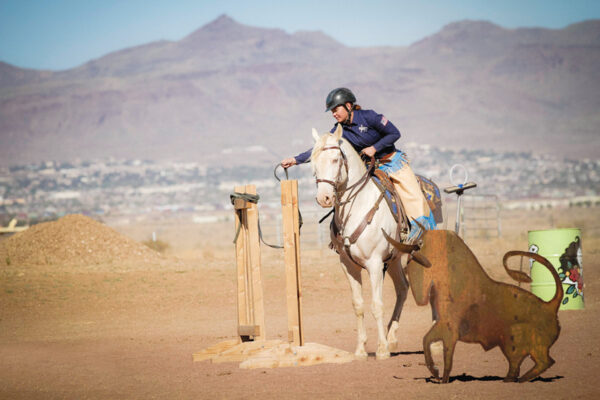
The IALHA is offering free youth memberships this year to those 18 and under who are interested in Andalusians and Lusitanos. This promotion is offered thanks to a grant from the U.S. Equestrian Youth Sportsman Award, and free memberships include a $20 gift certificate from the IALHA online store. Visit www.ialha.org to learn more.
If you like beautiful horses with big hearts, plenty of history, and a whole lot of talent, you can’t go wrong with Andalusians and Lusitanos.
This article about the Andalusian and Lusitano breeds appeared in the March/April 2022 issue of Young Rider magazine. Click here to subscribe!

